Do you have a question about the Siemens SIMOTION D410 Series and is the answer not in the manual?
| Brand | Siemens |
|---|---|
| Model | SIMOTION D410 Series |
| Category | Controller |
| Language | English |
Overview of SIMOTION D, its applications, and integration into automation systems.
Lists interfaces and components SIMOTION D410 uses for communication.
Shows interfaces and front elements of the SIMOTION D410 DP unit.
Describes the interfaces of the SIMOTION D410 DP.
Illustrates interfaces and front elements of the SIMOTION D410 PN unit.
Details the interfaces of the SIMOTION D410 PN.
Shows information on the nameplate of the CompactFlash Card (CF card).
Explains licensing requirements for SIMOTION D410 runtime functions.
Provides crucial safety notes to observe when working with SIMOTION D410 components.
Lists the requirements for commissioning the SIMOTION D410 system.
Details the procedure for correctly inserting the CompactFlash card into the SIMOTION D410.
Guides on checking the system and safely switching on the power supply.
Explains how to perform a system reset using the RESET button.
Provides an overview of the SIMOTION D410 memory architecture and data storage.
Details the non-volatile data types and their content within SIMOTION devices.
Explains how operator actions affect user memory in the SIMOTION D410.
Details options for backing up non-volatile SIMOTION data to the CompactFlash Card.
Explains scenarios for restoring non-volatile SIMOTION data after a CPU replacement or reset.
Lists messages found in the diagnostics buffer related to data loading.
Explains system variables indicating the state of non-volatile SIMOTION data.
Describes system variables for evaluating battery requirement and presence.
Explains system variables for determining fan requirement and availability.
Lists the necessary software requirements for commissioning the SIMOTION D410.
Guides on creating a SIMOTION project and configuring communication interfaces.
Explains how to set interface properties for the PROFINET interface.
Details configuring the PROFIBUS PG/PC interface for the SIMOTION D410 DP.
Guides on configuring the Ethernet PG/PC interface for the SIMOTION D410 PN.
Shows how the SIMOTION D410 is represented in the HW Config software.
Explains the PROFIBUS DP standard and its master/slave communication.
Details how to assign PROFIBUS addresses in HW Config for intercommunication.
Describes the operating modes of the PROFIBUS DP interface (X21).
Guides on setting up a new PROFIBUS DP subnet within SIMOTION SCOUT.
Explains how to set DP cycle and system cycle clocks for SIMOTION D410 DP.
Outlines the rules for setting DP cycle and SINAMICS clocks to ensure proper synchronization.
Specifies rules for DP cycle and SIMOTION D410 DP clock synchronization.
Introduces PROFINET as an industrial communication system using Ethernet.
Details the PROFINET interface (ports X200, X201) and its properties.
Explains how to retrieve the IP address of SIMOTION D410 PN using SIMOTION SCOUT.
Guides on modifying IP address, device name, and network gateway settings for PROFINET.
Explains setting PROFINET send cycles and system clocks for SIMOTION D410 PN.
Outlines rules for using the PROFINET send cycle and its relation to system clocks.
Provides an overview and prerequisites for software commissioning of SIMOTION D410.
Explains symbolic assignment for configuring technological relationships between controller and drive.
Details how to activate symbolic assignment for existing projects and its benefits.
Describes automatic adaptation for configuring SINAMICS S110/S120 data as of SIMOTION V4.2.
Lists the recommended steps for configuring the plant and testing drives/axes.
Highlights key functions for project handling and commissioning in SIMOTION SCOUT.
Explains how to create a SIMOTION project offline when hardware is not available.
Details how to access the Drive Wizard for configuring the integrated SINAMICS S120 drive.
Guides on configuring the drive's power unit, motor, and encoder.
Explains how to download the project to the SIMOTION D410 target system.
Details writing an offline project to the CompactFlash Card using SIMOTION SCOUT.
Describes downloading additional data like sources for project comparison.
Explains how to save a SIMOTION project as a zip file to the CF card.
Introduces online configuration of the plant and use of automatic configuration.
Guides on establishing an online connection to SIMOTION D410 for initial commissioning.
Details the steps to start the automatic configuration of SINAMICS Integrated components.
Explains how to reconfigure SINAMICS components after automatic configuration.
Guides on downloading the configured project to the SIMOTION D410.
Explains how to adapt DP slave properties of SINAMICS Integrated in HW Config.
Details changing the DP cycle for SINAMICS Integrated, especially for vector drives.
Provides a procedure for using vector drives with SIMOTION D410, including HW Config changes.
Explains how to set the real-time clock for SIMOTION D410.
Describes how SINAMICS system runtime is displayed and recorded.
Details the process of converting SINAMICS clock to UTC and synchronizing with SIMOTION clock.
Explains how to display the SINAMICS Integrated diagnostic buffer in SIMOTION SCOUT.
Explains acyclic communication for reading/writing drive parameters using PROFIdrive.
Lists control properties and performance features of SIMOTION D410 compared to SINAMICS S120 CU310.
Discusses effects of non-125µs controller cycle clocks on sampling times for I/Os.
Guides on testing a configured drive using the drive control panel.
Details the process of testing a configured drive using its control panel.
Introduces using SIMOTION SCOUT Engineering Software to add axes to a project.
Explains how the TO axis provides functionality and interfaces for drives using the axis wizard.
Describes options for assigning a drive to an axis or defining the assignment later.
Explains how encoders are created and assigned to the Axis TO.
Describes activation of technology and safety data blocks for axis TO.
Details using the axis control panel for testing axes and their functions.
Explains the need to determine addresses for process data exchange after component configuration.
Details configuring message frames for PROFIdrive PZD message frames.
Outlines the option to integrate and configure additional encoders with SIMOTION D410.
Explains how to configure a second encoder on the drive for tasks like machine encoding.
Describes connecting additional encoders via PROFIBUS or PROFINET.
Guides on assigning I/O variables to the PROFIdrive message frame of the TO axis.
Details assigning I/O variables to drive parameters using the assignment dialog.
Introduces configuring drive-related I/Os using symbolic assignment.
Divides I/O configuration into configuring I/O terminals and technology objects/variables.
Provides an overview of configuration options for I/O terminals of various modules.
Details the configuration of SIMOTION D410 I/Os on terminal X121.
Explains configuration of I/Os for CU3xx/TB30/TMxx modules.
Details how to configure TMC I/O terminals via HW Config.
Guides on configuring global measuring inputs, which have extended functionality.
Explains that local measuring inputs are drive-related and configured via drive parameters.
Details selecting the type of cam output for TO outputCam and TO camTrack.
Describes two options for assigning I/O terminals to I/O variables.
Explains how to set substitute values for I/O variables, especially for BOOL data types.
Describes the characteristics of DMC20 and DME20 DRIVE-CLiQ hub modules.
Explains how the TM41 terminal module expands digital I/O and analog inputs.
Guides on configuring the TM41 terminal module within SINAMICS Integrated.
Introduces the automatic controller setting wizard for drive controller optimization.
Details features and procedures for automatic speed controller setting.
Explains automatic setting of DSC position controller for SINAMICS drive units.
Describes measuring functions for drive controller optimization using trace and function generator.
Guides on manually optimizing the speed controller using measuring functions.
Explains how to adjust the P-gain of the controller to optimize transient response.
Advises backing up SIMOTION user data to the CompactFlash Card after commissioning.
Details using "Copy RAM to ROM" and other functions to save user data to the CompactFlash Card.
Defines the scope of data deletion from SIMOTION D410 memory.
Explains how to reset the SIMOTION D410 memory, deleting RAM and non-volatile data.
Details resetting memory using the mode selector switch (DIL switch) in offline mode.
Guides on deleting existing user data from the CompactFlash Card to load a new project.
Explains how to restore the default settings of SINAMICS Integrated via the project navigator.
Details restoring SIMOTION D410 default settings using the DIL switch.
Provides guidelines for safely shutting down the system components.
Introduces integrated safety functions of SINAMICS S120 for SIMOTION D410.
Lists available Safety Integrated Extended functions, generally requiring a license.
Specifies hardware versions required for safety functions controlled via TM54F or PROFIsafe.
Illustrates safety functions control via PROFIBUS with PROFIsafe.
Discusses setting servo cycle clocks when PROFIsafe is used.
Distinguishes scenarios for replacing and updating components in SIMOTION D410.
Explains that component replacement/update procedures depend on version changes.
Discusses options for deleting retain data from a used D410 before module replacement.
Provides step-by-step instructions for removing and installing the SIMOTION D410 module.
Explains backing up data to CF Card before module replacement without a PC.
Describes module replacement for DRIVE-CLiQ components, which can be done during operation.
Explains automatic firmware updates/downgrades for DRIVE-CLiQ components.
Guides on replacing the fan if a warning is issued due to temperature monitoring.
Advises contacting support for license key conversion and writing projects to new CF cards.
Explains when project adaptation is needed for SIMOTION device type or version changes.
Emphasizes the importance of creating backup copies of the project and CF card before adaptation.
Guides on backing up and restoring runtime data using SCOUT functions.
Details the process and prerequisites for upgrading a user project to a new SCOUT version.
Explains platform replacement using XML export/import for different SIMOTION platforms.
Outlines device replacement steps and interchangeable devices within SIMOTION D.
Guides on replacing a device within HW Config in SIMOTION SCOUT.
Explains how SIMOTION technology packages are upgraded during device replacement.
Discusses how SIMOTION technology package versions change during upgrades.
Details loading technology packages to the target device, especially when versions change.
Guides on upgrading SINAMICS S120 control unit versions connected via PROFIBUS/PROFINET.
Explains when library upgrades may be required and the procedure.
Details the process of saving, compiling, and checking project consistency.
Explains the necessity and process of upgrading the CompactFlash Card's bootloader.
Outlines options for firmware and project updates/downgrades for SIMOTION D410.
Describes performing firmware and project updates using IT DIAG via a Web server.
Details the advantages and process of upgrading SIMOTION devices using a device update tool.
Provides steps for upgrading firmware using a CompactFlash Card.
Explains how to undo an upgrade procedure using the service selector switch.
Recommends backing up CF card contents before firmware upgrades/downgrades.
Details backing up licenses and other retain/user data from the CF card.
Provides a step-by-step procedure for updating firmware via a CompactFlash Card.
Explains automatic upgrading of SINAMICS components to the CF card firmware version.
Details downloading the upgraded project to the SIMOTION D410 and CF card.
Provides instructions for safely removing and inserting the CompactFlash Card.
Explains options for writing data to a CompactFlash Card, either in SIMOTION D or via adapter.
Guides on formatting a CompactFlash Card, noting FAT/FAT16 requirements.
Explains situations requiring bootloader writing and the procedure using SIMOTION SCOUT.
Provides important points for correct handling of CF cards to prevent damage and ensure longevity.
Explains how status LEDs display operating modes and fault states of SIMOTION D410.
Provides an overview of relevant LED display combinations and their meanings.
Outlines options for backing up diagnostic and non-volatile SIMOTION data without engineering system.
Details how to back up diagnostic data and non-volatile SIMOTION data.
Guides on backing up data using the service selector switch.
Explains backing up diagnostic and non-volatile data during device startup.
Details using an INI file for controlling diagnostic data creation during startup.
Lists the types of diagnostic and non-volatile data stored on the CompactFlash Card.
Explains using websites for backing up diagnostic data and creating customized diagnostic sites.
Guides on deleting and restoring non-volatile SIMOTION data.
Explains backing up diagnostic data via IT DIAG websites.
Introduces the SIMOTION Task Profiler application for analyzing task trace data.
Describes using IT DIAG for comprehensive device and diagnostic information.
Explains the fundamental difference between local and global measuring input configurations.
Compares local and global measuring inputs available for measuring tasks.
Details how to use I/O terminals as measuring inputs on SIMOTION D410 or SINAMICS Control Unit.
States that products satisfy EC Directives and comply with harmonized European standards.
States that products satisfy EC Directives and comply with harmonized European standards.
Confirms EMC standards are satisfied if the EMC Installation Guideline is observed.
Lists UL component mark for United States and Canada.
Provides FCC statement regarding radio frequency energy and interference.
Notes on EMC requirements for variable speed drive systems and SINAMICS S120 installation.
Lists residual risks emanating from control and drive components for machine safety assessment.
Defines ESD and explains that electronic components are sensitive to static discharge.
Illustrates maximum electrostatic charges that can accumulate on operators based on materials and humidity.
Provides measures for grounding and avoiding direct contact with ESD components.

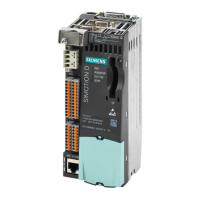
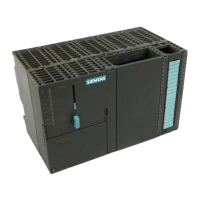

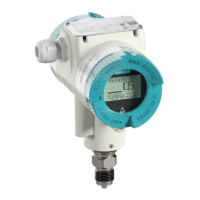


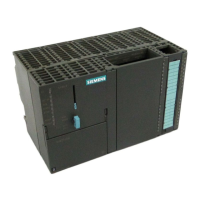

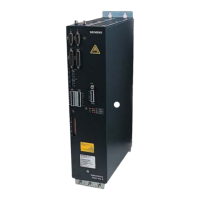


